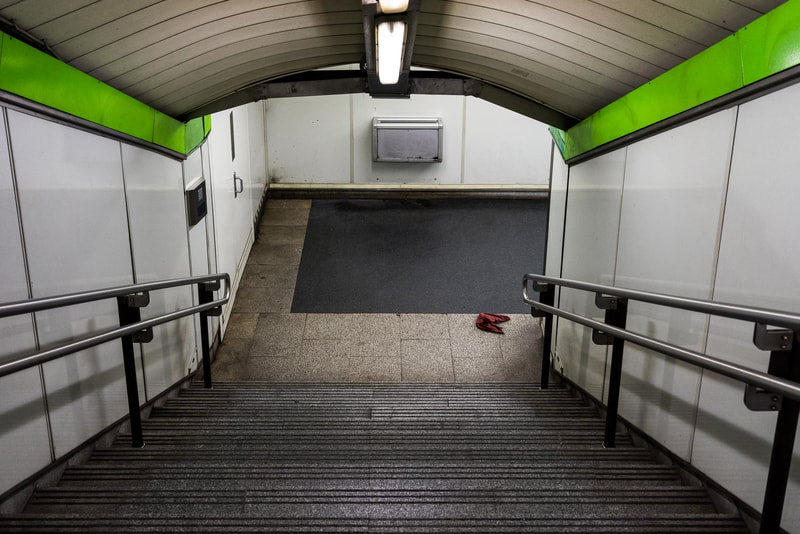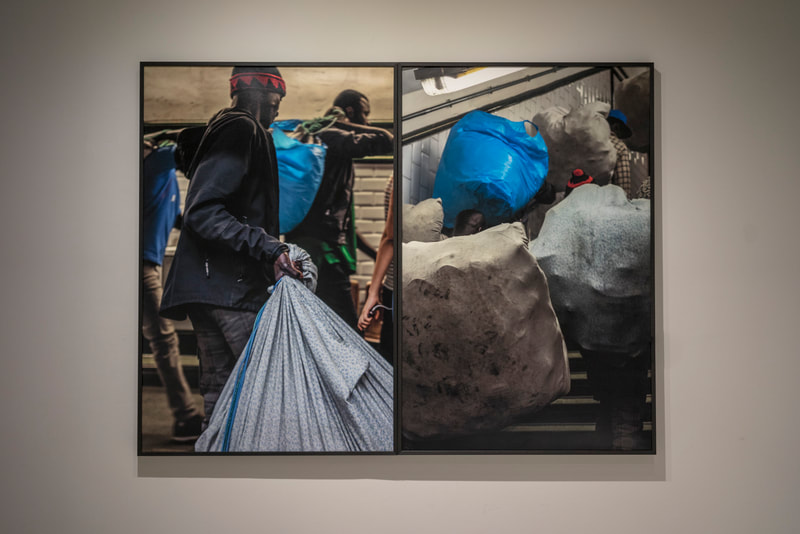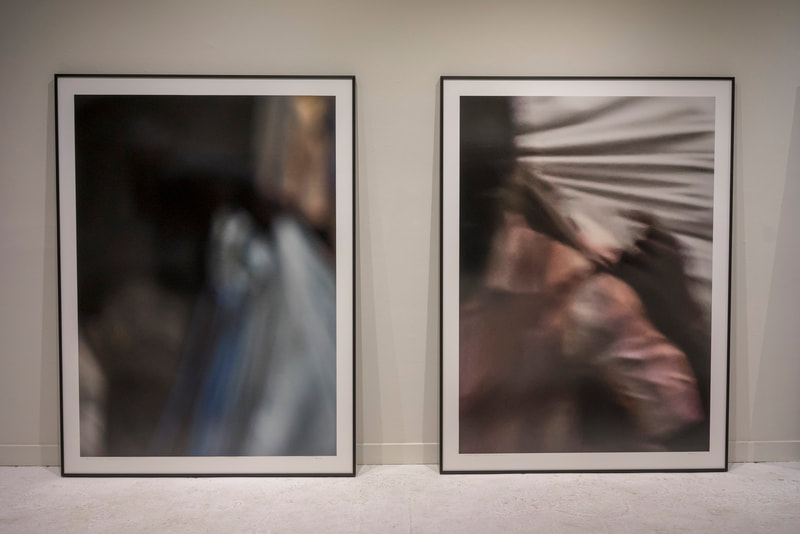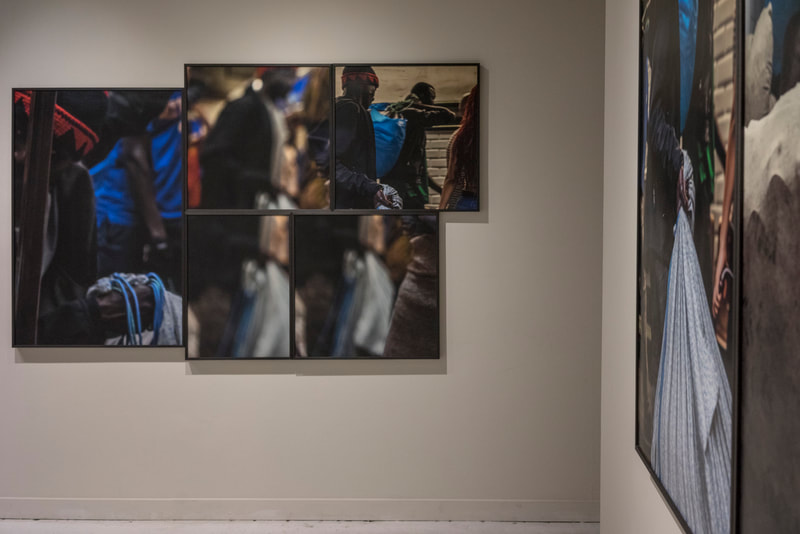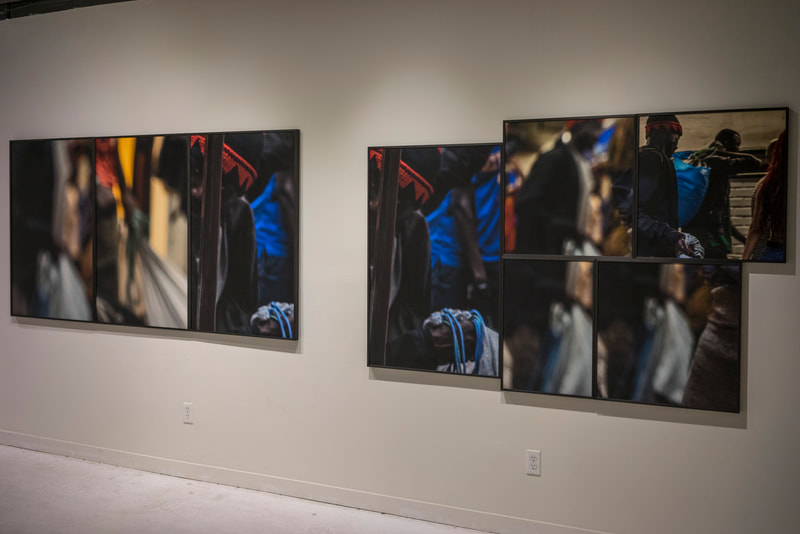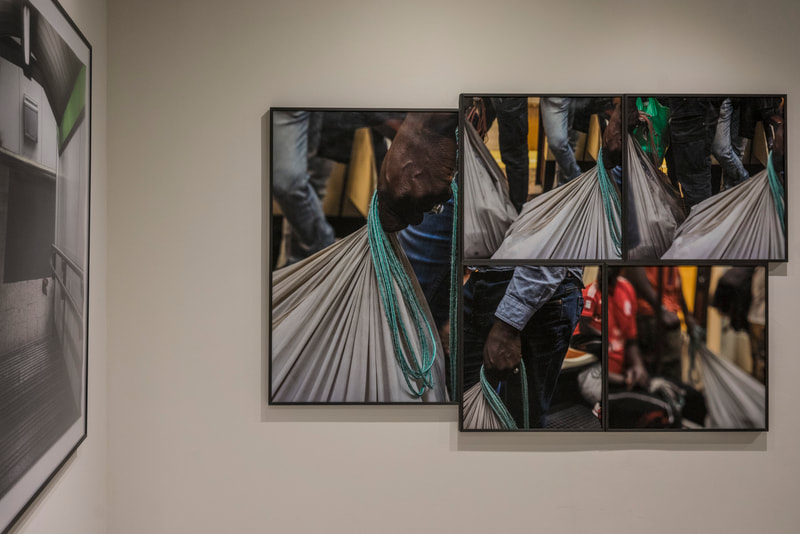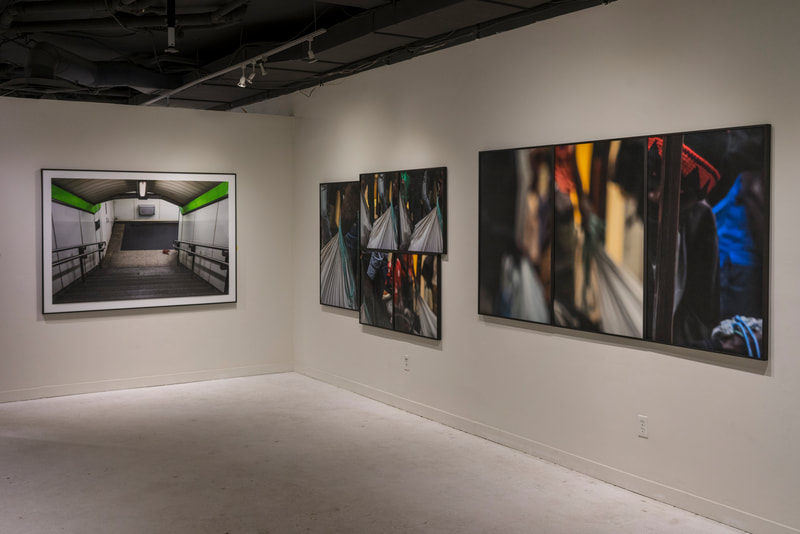Enrique Manchon
Enrique Manchón is a photographer surveying scenic layers, and an educator examining language patterns, Enrique is a long-time resident of Vancouver. He studied Fine Arts and Hispanic Literature at the University of British Columbia, where he taught for many years. His initiation in photography and the visual arts was influenced by the work and teaching of Fred Herzog and the group of photo based conceptualists that were evolving in the city, and within the university, at the time. His images tend to reflect the external effects of modernization: global consumerism, urban evolution with its contrasting cycles of growth and decay, social marginalization and disconnection. He conceives the photographic act as the suggestive fragmentation of space and is interested in the narrative and expressive dimensions generated by sets of inter-referential photographs.
Past Exhibition at MRG
Ghosts in the city Lost in the heart Destination Babylon
August 29 - September 26, 2020
Curated by: Josema Zamorano
Destination Babylon is a photographic project -part visual poem, part social commentary- that directs our gaze to the plight of uprooted people whose destiny -as the title indicates- is to migrate to the big cities of the world in the hope of improving their lives. Once they arrive to their previously chosen or sometimes fortuitous destinations, and under the veil of disillusionment, they subsist at the mercy of a complex web of forces --social, political and economic in nature-- which are global in scale and, generally, frame the stark inequalities of a questionable world system.
While this photo-poetic project is related to African migration within a European context –mainly Senegalese inhabitants of Madrid and Barcelona-- similar commentaries would also apply to other destination cities, such as Mexico City, where indigenous and mestizo people migrate from neighboring regions. Clandestine to the same systems that drag them into centers of global hegemony, these migrants become forsaken dwellers who peddle merchandise of limited value from carefully spread-out blankets. These disenfranchised people are active bearers of a globalized socio-economic malaise, a condition which, with contextual variances, also permeates our own local environment. As this uneven reality is exacerbated by the current pandemic, it is a good moment to ask: will any of this collective imbalance be reconsidered in the so called “new normal” expected in the era After Pandemic (AP)?
Destination Babylon questions our socio-economic structures and consumptive habits while expanding on the expressiveness of the medium of photography -exploring, fragmenting, and reconfiguring recognizable spaces into expressive lyrical abstractions characteristic of what has been referred to as “any-spaces-whatever” (Deleuze). Manchon adheres to perspectivist approaches found in inspiring literary and visual art expressions (Cortazar’s Hopscotch and Goya, among others, come to mind). He often composes two-dimensional spaces that engage the viewer in a game of questioning and reconfiguration. These works take the shape of carefully crafted image-body-space relational scenes, ranging from photo-montages to a series of quasi-cinematic image sequences.
For this series he acknowledges being inspired by musician and political activist Manu Chao, and his song Clandestino.
“perdido en el corazón de la grande Babylon…”
“lost in the heart of the big city…”
About the Curator Josema Zamorano:
Zamorano worked as telecommunications engineer before making a turn to the arts. The relations amongst téchne, art and human comprehension are a continuous concern in his work. He began doing street photography while being a student of Latin American poetry at Mexico’s National University. He moved to Vancouver in 2006. With intersecting interests in poetry, existential philosophy and visual arts he earned a Ph.D. in Interdisciplinary Studies (University of British Columbia, 2012). He currently teaches at Capilano University.
Presenting Sponsor
While this photo-poetic project is related to African migration within a European context –mainly Senegalese inhabitants of Madrid and Barcelona-- similar commentaries would also apply to other destination cities, such as Mexico City, where indigenous and mestizo people migrate from neighboring regions. Clandestine to the same systems that drag them into centers of global hegemony, these migrants become forsaken dwellers who peddle merchandise of limited value from carefully spread-out blankets. These disenfranchised people are active bearers of a globalized socio-economic malaise, a condition which, with contextual variances, also permeates our own local environment. As this uneven reality is exacerbated by the current pandemic, it is a good moment to ask: will any of this collective imbalance be reconsidered in the so called “new normal” expected in the era After Pandemic (AP)?
Destination Babylon questions our socio-economic structures and consumptive habits while expanding on the expressiveness of the medium of photography -exploring, fragmenting, and reconfiguring recognizable spaces into expressive lyrical abstractions characteristic of what has been referred to as “any-spaces-whatever” (Deleuze). Manchon adheres to perspectivist approaches found in inspiring literary and visual art expressions (Cortazar’s Hopscotch and Goya, among others, come to mind). He often composes two-dimensional spaces that engage the viewer in a game of questioning and reconfiguration. These works take the shape of carefully crafted image-body-space relational scenes, ranging from photo-montages to a series of quasi-cinematic image sequences.
For this series he acknowledges being inspired by musician and political activist Manu Chao, and his song Clandestino.
“perdido en el corazón de la grande Babylon…”
“lost in the heart of the big city…”
About the Curator Josema Zamorano:
Zamorano worked as telecommunications engineer before making a turn to the arts. The relations amongst téchne, art and human comprehension are a continuous concern in his work. He began doing street photography while being a student of Latin American poetry at Mexico’s National University. He moved to Vancouver in 2006. With intersecting interests in poetry, existential philosophy and visual arts he earned a Ph.D. in Interdisciplinary Studies (University of British Columbia, 2012). He currently teaches at Capilano University.
Presenting Sponsor


